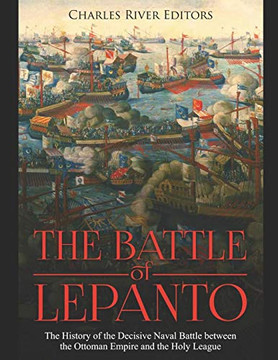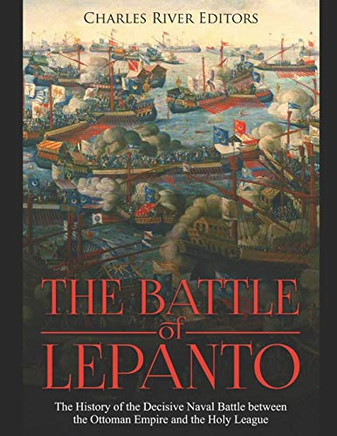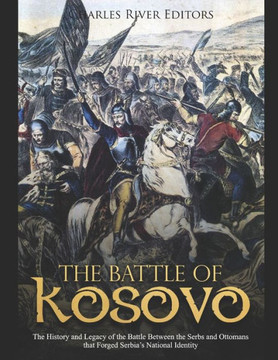
Independently Published
The Battle Of Lepanto: The History Of The Decisive Naval Battle Between The Ottoman Empire And The Holy League
Product Code:
9781080931316
ISBN13:
9781080931316
Condition:
New
$11.51

The Battle Of Lepanto: The History Of The Decisive Naval Battle Between The Ottoman Empire And The Holy League
$11.51
*Includes pictures *Includes a bibliography for further reading In terms of geopolitics, perhaps the most seminal event of the Middle Ages was the successful Ottoman siege of Constantinople in 1453. The city had been an imperial capital as far back as the 4th century, when Constantine the Great shifted the power center of the Roman Empire there, effectively establishing two almost equally powerful halves of antiquity's greatest empire. Constantinople would continue to serve as the capital of the Byzantine Empire even after the Western half of the Roman Empire collapsed in the late 5th century. Naturally, the Ottoman Empire would also use Constantinople as the capital of its empire after their conquest effectively ended the Byzantine Empire, and thanks to its strategic location, it has been a trading center for years and remains one today under the Turkish name of Istanbul. The end of the Byzantine Empire had a profound effect not only on the Middle East but Europe as well. Constantinople had played a crucial part in the Crusades, and the fall of the Byzantines meant that the Ottomans now shared a border with Europe. The Islamic empire was viewed as a threat by the predominantly Christian continent to their west, and it took little time for different European nations to start clashing with the powerful Turks. In fact, the Ottomans would clash with Russians, Austrians, Venetians, Polish, and more before collapsing as a result of World War I, when they were part of the Central powers. In the wake of taking Constantinople, the Ottoman Empire would spend the next few centuries expanding its size, power, and influence, bumping up against Eastern Europe and becoming one of the world's most important geopolitical players. It would take repeated efforts by various European coalitions to prevent a complete Ottoman takeover of the continent, and one of the most important battles among those efforts took place in 1571. The Battle of Lepanto is one of the great iconic military clashes of history, ranked with Waterloo, Hastings, Somme and the Battle of Britain. It was the last and largest great battle involving galleys - oared vessels that rammed and boarded enemy vessels - and also the first great naval conflict that effectively used cannons. It was a clash between two great civilizations fighting for supremacy in the world and for control of Europe: the Ottoman Empire and the Christian states of Europe. The Museu Maritim in Barcelona houses a life-sized replica of the Real, the flagship of the Holy League, as well as numerous small models and contemporary paintings. The Museo Storico Navale in Venice boasts models of galleys and galleasses (gunboats). Christian (particularly Catholic) tradition has hailed the Battle of Lepanto as a triumph of the West, while the Islamic world has largely ignored it as insignificant. What is certain is that it temporarily checked Ottoman naval power and helped save Europe from a potential invasion. Thus, even as there are few actual relics of the battle, the battle was comprehensively documented by contemporary Europeans. One of them was Miguel de Cervantes, remembered today the author of Don Quixote, who lost the use of his left arm in the fighting. The Battle of Lepanto: The History of the Decisive Naval Battle between the Ottoman Empire and the Holy League chronicles the events and conflicts that led to one of Europe's most famous naval battles. Along with pictures of important people, places, and events, you will learn about the Battle of Lepanto like never before.
| Author: Charles River Editors |
| Publisher: Independently Published |
| Publication Date: Jul 16, 2019 |
| Number of Pages: 61 pages |
| Language: English |
| Binding: Paperback |
| ISBN-10: 1080931317 |
| ISBN-13: 9781080931316 |





